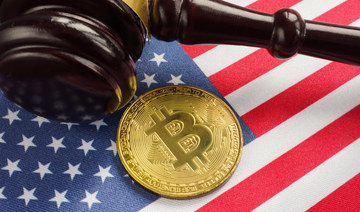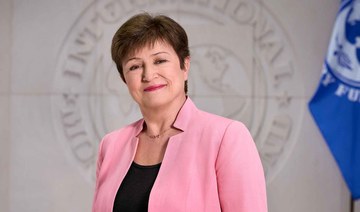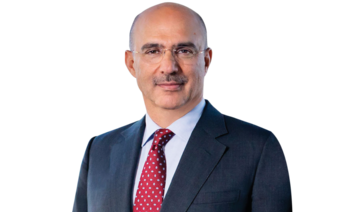NEW YORK: Meltdowns in the cryptocurrency space are common, but the latest one really touched some nerves. Novice investors took to online forums to share tales of decimated fortunes and even suicidal despair. Experienced crypto supporters, including one prominent billionaire, were left feeling humbled.
When the stablecoin TerraUSD imploded last month, an estimated $40 billion in investor funds was erased — and so far there has been little or no accountability. Stablecoins are supposed to be less vulnerable to big swings — thus the name — but Terra suffered a spectacular collapse in a matter of days.
The Terra episode publicly exposed a truth long-known in the always-online crypto community: for every digital currency with staying power, like bitcoin, there have been hundreds of failed or worthless currencies in crypto’s short history. So Terra became just the latest “sh— coin” — the term used by the community to describe coins that faded into obscurity.
Terra’s quick collapse came just as bitcoin, the most popular cryptocurrency, was in the midst of a decline that has wiped out nearly half of its value in a couple of months. The events have served as a vivid reminder that investors, both professionals and the mom and pop variety, can be rolling the dice when it comes to putting money into digital assets.
After being mostly hands-off toward crypto, it appears that Washington has had enough. On Tuesday, two senators — one Democrat and one Republican — proposed legislation that seeks to build a regulatory framework around the cryptocurrency industry; other members of Congress are considering more limited legislation.
What’s surprising, however, is that the cryptocurrency industry is signaling its cooperation. Politicians, crypto enthusiasts, and industry lobbyists all point to last month’s collapse of Terra and its token Luna as the possible end of the libertarian experiment in crypto.
Stablecoins are typically pegged to a traditional financial instrument, like the US dollar, and are supposed to be the cryptocurrency equivalent of investing in a conservative money market fund. But Terra was not backed by any hard assets. Instead, its founder Do Kwon promised that Terra’s proprietary algorithm would keep the coin’s value pegged to roughly $1.00. Critics of Terra would be attacked on social media by Kwon and his so-called army of “LUNAtics”
Kwon’s promise turned out to be worthless. A massive selling event caused Terra to “break the buck” and collapse in value. Reddit boards dedicated to Terra and Luna were dominated for days by posts referencing the National Suicide Prevention Hotline.
Terra’s ascendance attracted not only retail investors but also better-known cryptocurrency experts. One notable “Lunatic” was billionaire Mike Novogratz, who tattooed his upper arm with the word Luna and a wolf howling at the moon. Novogratz told his followers that the tattoo “will be a constant reminder that venture investing requires humility.”
Michael Estrabillo entrusted his crypto investments to stablegains, an investment vehicle that he says had assured him and other investors that the funds were secured in USD Coin, one of the largest stablecoins. Then, on May 9, he said he was informed his money was locked up in Terra.
“Had I known I was involved in a currency that was backed by an algorithm, I would have never invested in that,” Estrabillo lamented.
Washington may also be waking up to the fact that what used to be niche part of the Internet and finance has gone mainstream and can no longer be ignored.
The total value of crypto assets hit a peak of $2.8 trillion last November; it’s now below $1.3 trillion, according to CoinGecko. Surveys show that roughly 16 percent of adult Americans, or 40 million people, have invested in cryptocurrencies. Retirement account giant Fidelity Investments now offers crypto as a part of a 401(k) plan. Sen. Cory Booker, D-New Jersey, has repeatedly pointed out that crypto is particularly popular among Black Americans, a community long distrustful of Wall Street.
Further, crypto has permeated popular culture. Numerous Super Bowl ads touted crypto. Sports arenas are now named after crypto projects and the Washington Nationals baseball team took a sponsorship deal from Terra before it collapsed. Celebrities routinely shill crypto on social media, and YouTube personalities generate millions of views talking about the latest crypto idea.
Terra’s collapse was a bridge too far, it seems.
On Tuesday, Sen. Kirsten Gillibrand, D-New York, and Sen. Cynthia Lummis, R-Wyoming, proposed a framework to start regulating the industry, which would include giving the Commodity Futures Trading Commission full regulatory jurisdiction over cryptocurrencies such as bitcoin and rewriting the tax code to include crypto. It would also fully regulate stablecoins for the first time ever.
This comes after the Biden administration’s working group on financial markets issued a 22-page report last November, calling on Congress to pass legislation that would regulate stablecoins. One recommendation includes a requirement that stablecoin issuers become banks that would hold sufficient cash reserves.
Treasury Secretary Janet Yellen has also called for stablecoin regulation, saying “we really need a regulatory framework to guard against the risks,” during a House committee meeting in May.
Further, it appears that the cryptocurrency industry — with its libertarian leanings and deep skepticism of Washington — might also be on board.
“I do think this is a bit of a wake-up call. A lot of people were taken aback by Terra’s failure,” said Perianne Boring, founder of the Chamber of Digital Commerce, one of the top lobbyists for the cryptocurrency industry.
Other crypto lobby groups, like the Association for Digital Asset Markets, have announced support for the Lummis-Gillibrand bill.
One idea that Washington seems to be coalescing around is that entities that issue stablecoins — often used as a bridge between traditional finance and the crypto world — need to be transparent about the assets backing them and be as liquid as any other instrument playing a key role in finance.
Sen. Pat Toomey, R-Pennsylvania, is circulating a separate bill that would require stablecoin providers to have a license to operate, restrict the types of assets they carry to back those stablecoins, as well as be subject to routine auditing to make sure they are complying.
Describing Terra as a “debacle,” Toomey said in an interview that Terra’s collapse made it even more important that Washington build some guardrails around stablecoins. Toomey is the top Republican on the Senate Banking Committee.
“It’s always difficult to get anything across the goal line in the Senate, but there’s nothing politically polarizing about creating a statutory regime for stablecoins,” Toomey said.
After Terra’s collapse there are two remaining big stablecoins: USD Coin issued by the company Circle, and Tether, created by the Hong Kong-based company Bitfinex. Both hold hard assets to back their value, but Bitfinex is less transparent about the assets it holds and is not audited. There are also a host of smaller stablecoin issuers, which in the world of crypto could become the latest hot item overnight.
“It’s not just urgent that Washington step in, it’s urgently urgent,” said Jeremy Allaire, founder and CEO of Circle, in an interview.
Crypto meltdown is wake-up call for many, including lawmakers
https://arab.news/vg7wn
Crypto meltdown is wake-up call for many, including lawmakers
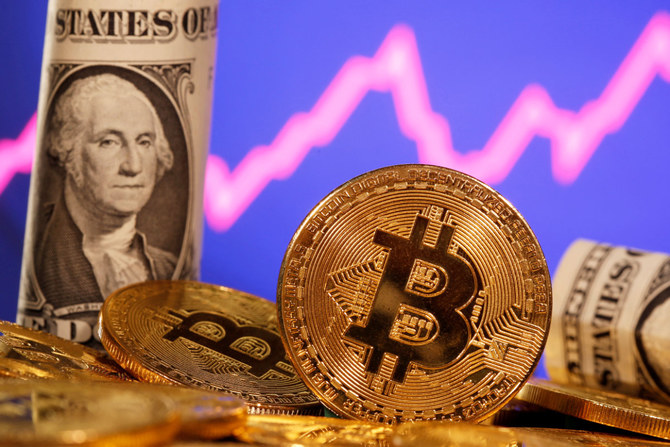
- Roughly 16% of adult Americans, or 40 million people, have invested in cryptocurrencies, survey shows
- Stablecoin TerraUSD's collapse has led to an estimated $40 billion in investor funds erased
IMF surcharges on borrowings exacerbate global inequities: report
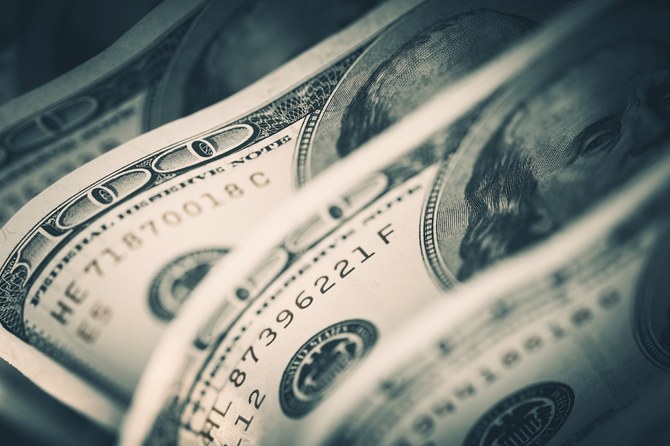
BENGALURU: Countries, mostly middle and lower-income, have been burdened by surcharges on top of interest payments on their borrowings from the International Monetary Fund, widening global inequities, according to a report by US think tanks.
WHY IT’S IMPORTANT
Indebted member countries paid about $6.4 billion in surcharges between 2020-2023, the report from Boston University’s Global Development Policy Center and Columbia University’s Initiative for Policy Dialogue released on Tuesday showed.
And the number of countries paying these surcharges has more than doubled in the last four years.
The IMF is expected to charge an estimated $9.8 billion in surcharges in the next five years, according to an earlier report by the Center for Economic and Policy Research.
Critics of the policy argue that surcharges do not hasten repayment and instead punish countries already struggling with liquidity constraints, increase the risk of debt distress and divert scarce resources that could be used to boost the struggling economies.
BY THE NUMBERS
Countries such as Ukraine, Egypt, Argentina, Barbados and Pakistan pay the most in surcharges, the report showed, accounting for 90 percent of the IMF’s surcharge revenues.
These surcharges, levied on top of the fund’s increasingly steeper basic rate, are IMF’s single largest source of revenue, accounting for 50 percent of total revenue in 2023.
KEY QUOTES
“IMF surcharges are inherently pro-cyclical as they increase debt service payments when a borrowing country is most need of emergency financing," Global Development Policy Center’s Director Kevin Gallagher said.
“Increasing surcharges and global shocks are compounding the economic pressure on vulnerable countries.”
CONTEXT
Data published by the Institute of International Finance earlier this year showed global debt levels hit a record of $313 trillion in 2023, while the debt-to-GDP ratio — a reading indicating a country’s ability to pay back debts — across emerging economies also scaled fresh peaks.
IMF shareholders agreed last week on the importance of addressing challenges faced by low-income countries, Managing Director Kristalina Georgieva said on Friday.
China’s wealth fund joins with Bahrain’s Investcorp for $1bn Middle East investment
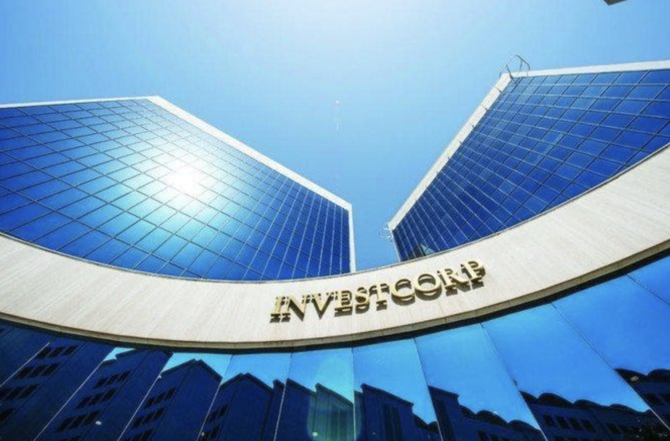
RIYADH: China’s growing interest in the Middle East continues as the country’s sovereign wealth fund partnered with Bahrain’s Investcorp to establish a $1 billion investment pot.
According to a press statement, Investcorp Golden Horizon fund will assist companies across Saudi Arabia, the wider Gulf Cooperation Council region and China.
The reserve will be anchored by reputable institutional and private investors from the GCC, as well as China Investment Corp.
The press statement revealed that target companies are expected to have high growth potential in sectors including consumer, health care, logistics and business services.
“During the past couple of years, we have built several bilateral funds with leading financial institutions to facilitate industrial cooperation between China and major economies in the world,” said Bin Qi, executive vice president and chief information officer at CIC.
He added: “Currently, we are working closely with Investcorp to build a similar bilateral fund to strengthen financial and industrial ties between China and GCC countries.”
This commitment from CIC comes when the GCC’s appeal to institutional investors is gathering pace, thanks to its stable regulatory environment and pro-business policies, driven by economic diversification efforts in the region and strategic privatization mandates.
“This commitment by CIC, one of the world’s largest sovereign wealth funds, is a testament to Investcorp’s unparalleled franchise in the GCC and reinforces the trust placed in the firm’s global platform and teams. We are looking forward to building on this relationship and growing our partnership in the future,” said Mohammed Al-Ardhi, executive chairman of Investcorp.
Co-CEO of Investcorp Hazem Ben-Gacem said the launch of the new fund will facilitate cross-border cooperation and investments between the GCC and China.
Trade and economic relationships between the Middle East and China have always been strong.
In 2023, China’s exports to Saudi Arabia and the UAE amounted to $42.86 billion and $55.68 billion respectively.
On the other hand, the Asian giant’s imports from Saudi Arabia totaled $64.36 billion in 2023.
In November, Saudi Arabia’s central bank, also known as SAMA, and the People’s Bank of China signed a local currency swap agreement worth $6.93 billion.
SAMA, in a statement, said that the three-year agreement “has been established in the context of financial cooperation between the Saudi Central Bank and the People’s Bank of China.”
The Asian country’s central bank said that the agreement will help strengthen financial cooperation between Saudi Arabia and China, promote the use of local currencies, and strengthen trade and investments between nations.
Oil Updates – crude steady as market weighs US demand concerns, Middle East conflict risks

SINGAPORE: Oil prices steadied on Thursday after settling lower in the previous day, as signs of retreating fuel demand in the US, the world’s biggest oil user, contended with widening conflict risks in the key Middle East producing region, according to Reuters.
Brent crude futures inched up 18 cents, or 0.2 percent, to $88.20 a barrel at 9:30 a.m. Saudi time, while US West Texas Intermediate crude futures gained 13 cents, or 0.2 percent, to $82.94 a barrel.
Data from the US Energy Information Administration on Wednesday showed that gasoline stockpiles fell less than forecast while distillate stockpiles rose against expectations of a decline, reflecting signs of slowing demand.
The falling fuel demand is occurring amid signs of cooling US business activity in April and as stronger-than-expected inflation and employment data means the US Federal Reserve is more likely to delay expected interest rate cuts, weighing on economic sentiment.
“The current weakness in benchmark prices, after testing above $90 (a barrel) levels, is due to market sentiment refocusing on global economic headwinds over geopolitical tensions,” said Emril Jamil, senior oil analyst at LSEG Oil Research.
Geopolitics aside, prices this quarter will be driven by factors including major producer supply cuts, economic data out of China and Eurozone, on top of incremental demand expectations as the Northern Hemisphere heads into summer amid expected tighter supply, said Jamil.
A better indication of the Fed’s rate intentions will be seen after US gross domestic product and March personal consumption expenditure data is released on Thursday and Friday.
Meanwhile, fighting in the Gaza Strip between Israel and Hamas is expected to expand as Israel may start an assault on Rafah, in the enclave’s south, which may increase the risk of a wider war that could potentially disrupt oil supplies.
However, there have been no other signs of direct conflict between Israel and Hamas-backer Iran, a major oil producer, since last week.
“Tensions between Iran and Israel have eased, but Israeli attacks on Gaza are expected to worsen, and the risk of conflicts spreading to neighboring countries is underpinning oil prices,” said Toshitaka Tazawa, an analyst at Fujitomi Securities Co. Ltd.
Other EIA data on Wednesday showed that crude stocks slumped by 6.4 million barrels to 453.6 million barrels, compared with expectations in a Reuters poll for an 825,000-barrel rise.
Saudia unveils beta version of new Travel Companion platform
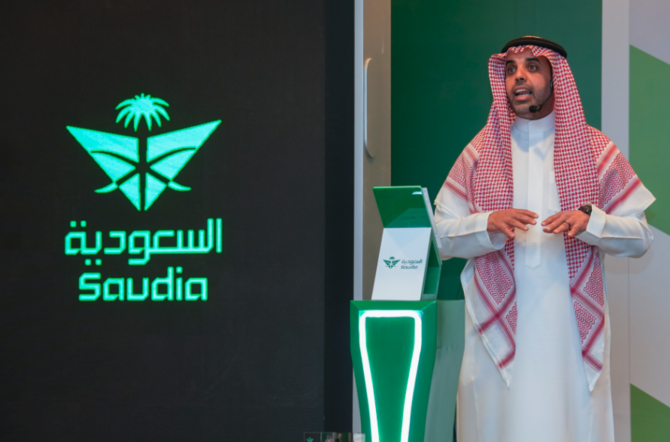
RIYADH: The Kingdom’s flagship airline Saudia has launched a beta version of its digital platform, the Travel Companion, powered by advanced artificial intelligence, aiming to transform the industry.
The new initiative, unveiled during a special event, is part of a two-year plan developed in partnership with global professional services firm Accenture.
“This platform, resulting from our ongoing collaboration with Accenture, signifies our forward-looking approach to providing guests with unparalleled convenience and flexibility,” the Director General of Saudia Group, Ibrahim Al-Omar, said.
The main objective of this launch is to transform how travelers engage with the airline and establish new benchmarks for digital travel.
TC, initially named, offers personalized and tailored solutions to meet individual preferences and needs, providing search results from trusted and authenticated sources and incorporating visual aids in its responses.
The interface is designed as a comprehensive, one-stop solution that enables users to book concierge services, including hotels, transportation, and restaurants, as well as activities and attractions, without the need to switch between multiple platforms.
“This is a beta version. This is not the product. We will keep enhancing and developing it,” Al-Omar stressed.
Moreover, it establishes seamless connections with transportation platforms and various train companies, ensuring a smooth and uninterrupted journey.
Commenting on the new announcement, Chief Data and Technology Officer at Saudia, Abdulgader Attiah, told Arab News: “It’s like having the VVVIP concierge service at your hand. For public, it’s not any anymore VIP service. It’s not a paid service. You have it for free, and it will give you all what all kind of services that VVIP service would provide to you, so it’s your private concierge.”
He added: “We will be the anchor for the travel industry. We are not anymore, an operator for an airline, but with this app, you will be an anchor for all tourism ecosystem in a single app, so everyone can collaborate in this app, and having the links, so you don’t need to communicate with any other party, so through this app, you can communicate to all travel ecosystem.”
In future phases, Saudia plans to add more features, including voice command and digital payment solutions.
“Once we add the complete solution we will add the more services, which is we call it the concierge services; booking for hotels and transportation and the restaurants, all of these ones is done during the, next two years, and this is the complete life cycle of the, vision we have today,” Attiah told Arab News.
He added: “If you want to develop this app, five years back, it would take three, four years. Today, we have developed only in seven, eight months. To that from the inspirational part to having an actual booking, we started back in June and now we are live.”
Attiah also underlined that Saudia is the first airline in the world to implement a GenAI-based chatbot that can perform end-to-end actions, meaning it can not only engage in conversation but also execute tasks or actions based on user requests.
With an always-on Travel Companion available through a telecom e-SIM card provided by Saudia, users can stay connected globally without relying on additional internet providers.
Furthermore, users can purchase data packages for extended use, guaranteeing continuous access to the platform’s services.
Saudi economy witnessing a fundamental shift, says minister
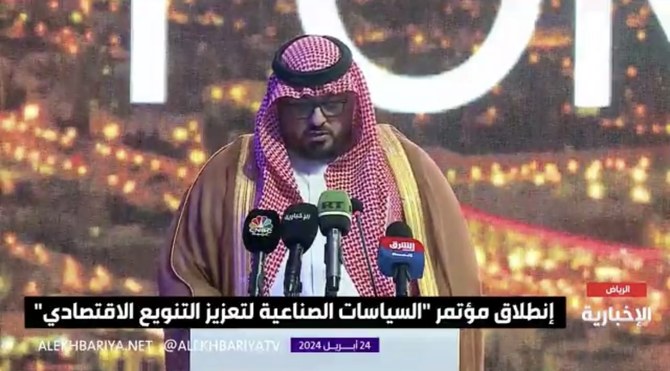
RIYADH: Since the launch of Vision 2030, Saudi Arabia has witnessed a fundamental shift in its economy and the business environment is transforming with the creation of new sectors, said the Kingdom’s economy minister.
Faisal Al-Ibrahim was speaking at a conference in Riyadh on Wednesday during which he highlighted the fast-evolving business landscape of the Kingdom focused on diversifying its income sources away from oil.
Speaking at the event titled “Industrial policies to promote economic diversification,” the top official said there have been fundamental changes in the legislative and economic regulations to promote sustainable development since the launching of the Vision 2030 plan.
He said the Kingdom’s efforts to diversify its economy have led to the creation of new sectors due to the initiation of several megaprojects such as NEOM, the Red Sea, and others.
“We stand at a crossroads to change the global economy,” Al-Ibrahim said.
He stressed the need for strategies to ensure a flexible and sustainable economy.
“The presence of foreign investments will develop competitiveness in the long term,” the minister affirmed.
The minister also highlighted how the Kingdom was working in the medium term to focus on transforming sectors that represent a technological shift.
Saudi Arabia is keen on achieving development in the medium term by balancing short-term profits and promoting long-term success, Al-Ibrahim highlighted.
Since the launch of the vision, the Ministry of Economy and Planning has conducted several economic studies aimed at diversifying the economy by developing objectives for all sectors, raising complexity levels, and studying emerging economies to enhance the Kingdom’s capabilities.



